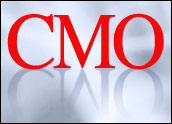
With a variety of options available for training their revenue-seeking professionals, today’s sales leaders need to carefully select the methodology that will most directly impact their bottom line.
Ongoing Aberdeen research of over 500 companies surveyed in July and August of 2009, which will be published this month, provides significant insight into how Best-in-Class organizations select and deploy sales training modalities.
Among these modalities, instructor-led training was the most widely utilized (70 percent) and also represented the modality most closely associated with sales rep quota achievement.
Resolving Business Pressures, Taking Action
The pressures that drive organizations to pursue sales training focus on two predominant needs: to increase revenue (70 percent); and to align sales activity with business objectives (40 percent).
In response to these pressures, companies are pursuing two primary strategies: Creating more meaningful sales conversations (53 percent); and enhancing skills in prospecting, nurturing and closing (49 percent). Data provides insight into the power of personal instruction, revealing that among all companies that deploy external training solutions, those favoring instructor-led methodologies show an average 14 percent increase in the percentage of sales reps achieving their annual quota, compared to those that do not utilize this delivery modality.
This emphasis on rep-level, rather than organization-wide, improvements in skills, techniques and individual capabilities speaks to the potential value of deploying instructor-led training scenarios. After all, given the potential cost of recruiting, hiring, on-boarding and training quality sales team members, it should be no surprise that core selling skills and impacting the actual conversations with prospects represent the most significant room for improvement, and the opportunity to resolve both macro-economic pressures and organizational inefficiencies.
Instructor-Led Sales Training Defined and Successfully Deployed
The concept of “instructor-led” is focused on two important tenets: 1) Effective sales-oriented learning remains a highly personal and interactive process; and 2) An expert-level professional communicator/coach can provide the best insight, instruction and reinforcement of best practices for sales representatives and their leaders.
Some key foundational elements that are most closely aligned with instructor-led training — and provide much-needed support in both the application and reinforcement of sales training — include processes for post-training reinforcement, management tools to measure individual/team/regional competencies, and user-generated marketing and sales content.
What salespeople learn in a training program is only as good as how well they apply it in the real world. To ensure that what is taught is not left in the classroom or forgotten all together, companies that utilize instructor-led sales training are twice as likely as those that do not to have a process in place to reinforce the methodology in the field. In addition, it is important to measure what knowledge was/was not absorbed during training and to track the skills growth of the sales people once they leave the classroom. To this end, companies that provide instructor-led sales training are 46 percent more likely to provide tools that measure the readiness or proficiencies (i.e. competencies) of the sales team.
The content of instructor-led training is equally as varied as the delivery mechanisms. This includes training modules for team member collaboration, leadership development, process improvement, “train the trainer,” customer service and presentation skills. Industry- and culture-specific content is offered, as well as help for executives in the C-suite, sales leadership, professionals such as financial advisors who sell, L&D (learning and development) staff and, of course, quota-carrying sales reps of every flavor: inside, outside, field, hunter, farmer, closer and even channel partners. Finally, the specific selling skills offered ranges from strategic or conceptual selling, appointment-setting and securing executive-level sponsorship, to negotiating, account management and funnel/pipeline management.
Indeed, these methodologies are often complemented by diagnostics, reinforcement tools and performance support technologies — which are highly impactful and map to Best-in-Class trends across the board, and are presented in public workshops, on-site and customized corporate environments, via online/remote access, and many blended versions of all these approaches.
Aberdeen’s findings have also revealed that among all companies that train their sales teams, 79 percent of the Best-in-Class utilize external providers, compared with only 62 percent of Laggards. This lends significant credibility to the value of “working smarter, not harder” through continued investment in sales training despite constricted corporate budgets.
Opportunities for Instructor-Led Training Providers
Instructor-led sales training does represent a Best-in-Class enabler. In fact, Aberdeen’s September 2008 research “Achieving Real Business Value with Learning and Development,” a study of more than 500 human resources, learning and development, and line of business managers, revealed that instructor-led training was the run-away leader when it came to most valuable learning delivery modalities (cited by 81 percent of Best-in-Class).
However, in that same study, this same delivery modality ranked 3rd when it came to learning modalities that will see the most growth in 2009. Indeed, given the importance of balancing spend — both in hard costs such as travel expenditures and in sales time dedicated to the process — as well as the continued expanse of sales organizations (i.e. geographies covered, home-office vs. corporate office), and the demonstrable need to continue the educational process after the initial sales training event, an opportunity that exists for instructor-led sales training providers to include other delivery modalities into their fold.
Upcoming Aberdeen research will examine other modalities of external sales training and continue to explore how the Best-in-Class sales organizations from this study deploy specific capabilities (knowledge management, performance management, organizational and process-oriented) and enablers (solutions, technologies and services) that differentiate them from Industry Average and Laggard sales teams.
Peter Ostrow is research director of sales effectiveness at Aberdeen Group.














































